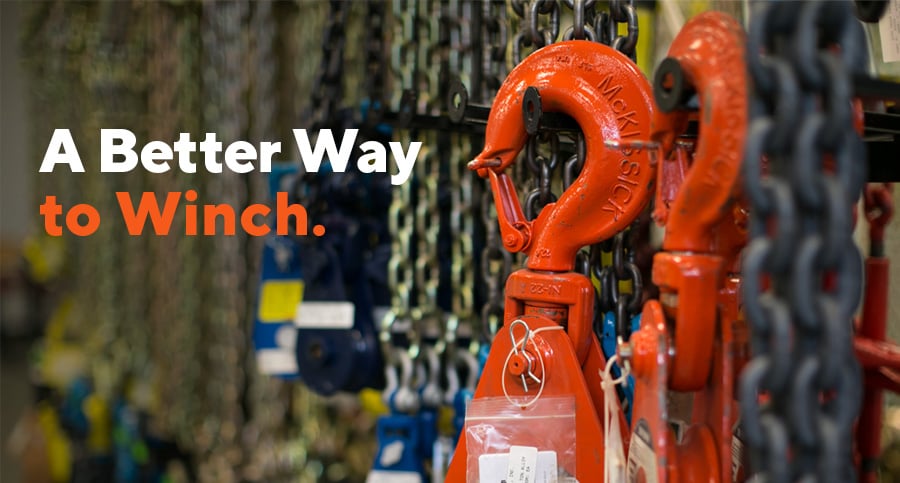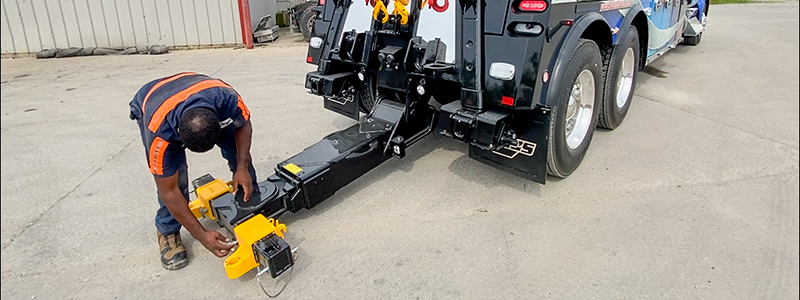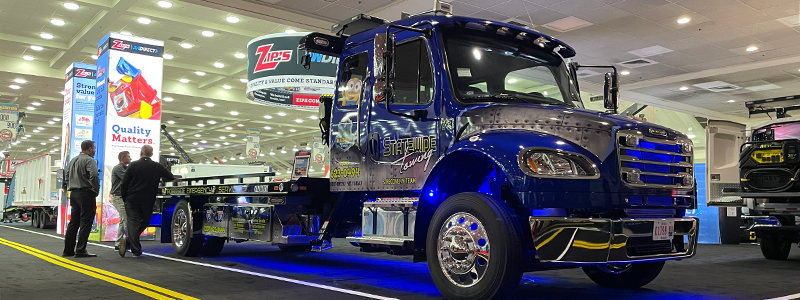Snatch Blocks: A Better Way to Winch

Snatch blocks are a common tool on almost every tow truck for good reason. Snatch blocks are useful in difficult recovery scenarios as they can increase the pulling force of a winch line.
A snatch block is a type of pulley block. It features a swing-open plate. This makes it suitable for short winch line runs and servicing.
When selecting snatch blocks for your truck, verify that the working load limit (WLL) of the winch line and snatch block are compatible. The snatch block must be at least as strong as your winch line.
Verify that the groove in the snatch block’s sheave wheel is sized for the diameter of your winch line. A groove that is too large won’t fully support the winch line and could cause damaging flat spots. A winch line that’s too large can crack the block.
To determine the proper size sheave wheel, use a 12:1 ratio. For example, a 3/8" winch line dia. multiplied by 12 yields 4.5" which is the ideal sheave diameter for a 3/8" wire rope.
Changing Directions.
Another primary use of a snatch block is to change the direction of pull. Blocks are anchored in a fixed position. The wider the angle at the block, the less force the recovery point has to withstand. One of the most common direction changes is attaching a snatch block to your bed. This allows the wire rope to feed straight into the winch. This ensures that it winds properly on the drum, rather than winding to one side.
Snatch blocks are also used as anchor points to change the winch line direction. Allowing the disabled vehicle or tow truck to increase pulling power. Multiple snatch blocks can even be used for self-extraction. This can be achieved by routing the winch line from the back of the tow truck to several anchored blocks to the front of the tow truck.
Increased Pulling Power
Snatch Blocks can increase pulling power by having a moving vs. fixed snatch block. In this situation, attach a snatch block to the load so it moves with the load as the winch is operated.
The amount of line angle at the moving block determines how much mechanical advantage is gained. Maximum gain is when the input wire rope is parallel, or zero degrees, to the output wire rope. This is called a double line pull.
It comes in handy when your winch is not rated for the amount of weight of your casualty. This setup effectively doubles the capacity of your winch by distributing the load over two lines.
Another situation is when the casualty is heavier than your recovery vehicle. In this instance, the tow truck’s wire rope goes through the snatch block attached to the casualty and back to another fixed snatch block then back to the load. This is a triple line pull and gains a 3:1 advantage. The more lines ran between the tow truck and the casualty, the more the pulling power increases.
Lubrication
When lubricating snatch blocks, use either sodium- or lithium-based grease. Bronze bushed blocks and sheaves generally need to be lubricated after 8 hours of continuous usage or at least every 14 days with intermittent use.
Roller bearing blocks and sheaves can be used for 24 hours continuously before needing lubrication. The same guideline of 14 days applies for intermittent use. Swivels follow the roller bearing lubrication schedule. Always follow your particular manufacturer’s lubrication timeline.
Snatch Block Inspection
Wear is a fact of life and will eventually affect the load a snatch block can handle. This means that regular and frequent inspection is needed. During inspection, keep the following in mind:
- Deformation of any part is an indication of overload and the snatch block must be replaced immediately.
- Swivel end-play of more than 1/16" is a danger sign. Replace the snatch block immediately.
- Spreading side plates are caused by overload and must be repaired or replaced.
- Looseness in the side plates are a sign of loose retaining nuts.
- Sheave alignment issues such as wobbly sheaves are caused by bearing wear.
- Groove wear in the sheave is caused by cable wear and can prematurely reduce wire rope life. Replace grooved sheaves immediately.
- Hook latches are designed to hold loose rigging under slack conditions. Replace any damaged latches.
- Any hook deformation, crack, gouge or distortion needs to be replaced immediately.
Having several snatch blocks on your tow truck can provide options when faced with challenging recoveries. Keeping them in proper working order will ensure they are ready when you need them most.
Before using any equipment described, be sure to read, understand and follow all manufacturers instructions and guidelines.


%20blog%20thumbnail.png)


%20blog%20thumbnail.png)







